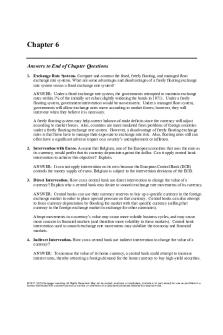E-K diagram, direct and indirect bandgap semiconductors PDF

| Title | E-K diagram, direct and indirect bandgap semiconductors |
|---|---|
| Author | Vedant Kadam |
| Course | Physics: Semiconductor Physics |
| Institution | SRM Institute of Science and Technology |
| Pages | 6 |
| File Size | 306.8 KB |
| File Type | |
| Total Downloads | 106 |
| Total Views | 138 |
Summary
It contains all the notes on E-K diagram, direct and indirect bandgap semiconductors along with diagrams ....
Description
VEDANT KADAM (RA2111003010241)
SEMICONDUCTOR PHYSICS E-K DIAGRAM & DIRECT AND INDIRECT BANDGAP SEMICONDUCTORS ● E-K Diagram The conventional band diagram shows the band gap energy only To know more electrical and optical properties of semiconductor material we need to know E-K diagram An E-K diagram shows characteristics of particular semiconductor material It shows the relationship between energy and momentum of available states for electron in the crystal K being the momentum and E as the energy from a mathematical point of view K is the wave vector The E-K diagram of semiconductor is obtained by solving the Schrodinger’s equation.
● Bloch theorem: • Most of the semiconductors are in crystalline form, i.e the atoms are arranged in periodic manner • The motion of electron in a crystal is governed by the laws of quantum mechanics • If we have one electron and one proton system like hydrogen atom it is easy to solve Schrodinger equation • But in solid there are large number of atoms and electrons present, so it's very difficult to solve the Schrodinger equation.
• If we consider a one dimensional periodic lattice and the potential energy (PE) of a moving electron depends on its position inside the lattice, but the PE is said to be periodic in nature by F. Bloch, and the probability of finding an electron is also periodic, the wave-function associated with an electron is also periodic in nature. • Since the probability of finding electron is equal to |Ψ|2
● Schrödinger’s one-Dimensional time independent wave equation Bloch postulated that the potential (V) inside the crystal is periodic, so V can be written as V(x) for one dimensional lattice. Again the periodic potential V(x) can be written as by means of lattice constant V(x+a) i.e V(x) = V (x+a)--------(2)
Bloch also postulated that the wave function of an electron moving in a periodic lattice is periodic and which is given as If we substitute the eqs 2 & 3 in eq 1 one can get the solution for the Schrödinger’s time independent equation by Numerical and analytical methods
From the above equation if we plot energy Eigenvalues vs wave vector K will give the E-K diagram So the energy Eigenvalues are periodic in k space There are three types of E-K diagram ➢ Periodic zone ➢ Extended zone ➢ Reduced zone Periodic zone scheme: The periodic repetition of allowed energy values corresponding to each allowed band, which is obtained by the periodic repetition of the region of -π/a< k...
Similar Free PDFs

Direct and indirect questions
- 3 Pages

Financement direct vs indirect
- 7 Pages

Direct vs indirect chart
- 1 Pages

semiconductors
- 173 Pages

Speelschema ek 2021 pdf
- 1 Pages

IGBT - Semiconductors
- 13 Pages
Popular Institutions
- Tinajero National High School - Annex
- Politeknik Caltex Riau
- Yokohama City University
- SGT University
- University of Al-Qadisiyah
- Divine Word College of Vigan
- Techniek College Rotterdam
- Universidade de Santiago
- Universiti Teknologi MARA Cawangan Johor Kampus Pasir Gudang
- Poltekkes Kemenkes Yogyakarta
- Baguio City National High School
- Colegio san marcos
- preparatoria uno
- Centro de Bachillerato Tecnológico Industrial y de Servicios No. 107
- Dalian Maritime University
- Quang Trung Secondary School
- Colegio Tecnológico en Informática
- Corporación Regional de Educación Superior
- Grupo CEDVA
- Dar Al Uloom University
- Centro de Estudios Preuniversitarios de la Universidad Nacional de Ingeniería
- 上智大学
- Aakash International School, Nuna Majara
- San Felipe Neri Catholic School
- Kang Chiao International School - New Taipei City
- Misamis Occidental National High School
- Institución Educativa Escuela Normal Juan Ladrilleros
- Kolehiyo ng Pantukan
- Batanes State College
- Instituto Continental
- Sekolah Menengah Kejuruan Kesehatan Kaltara (Tarakan)
- Colegio de La Inmaculada Concepcion - Cebu









